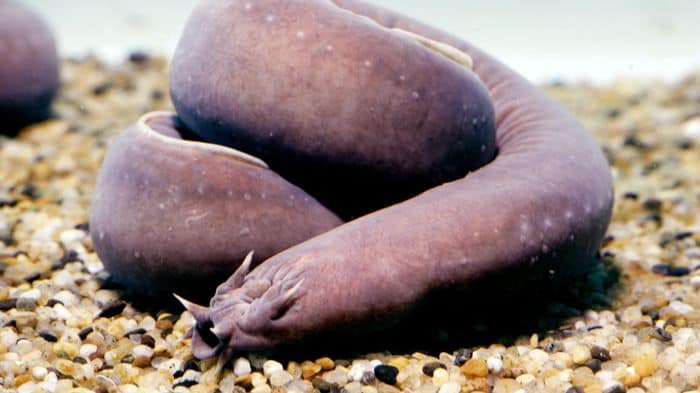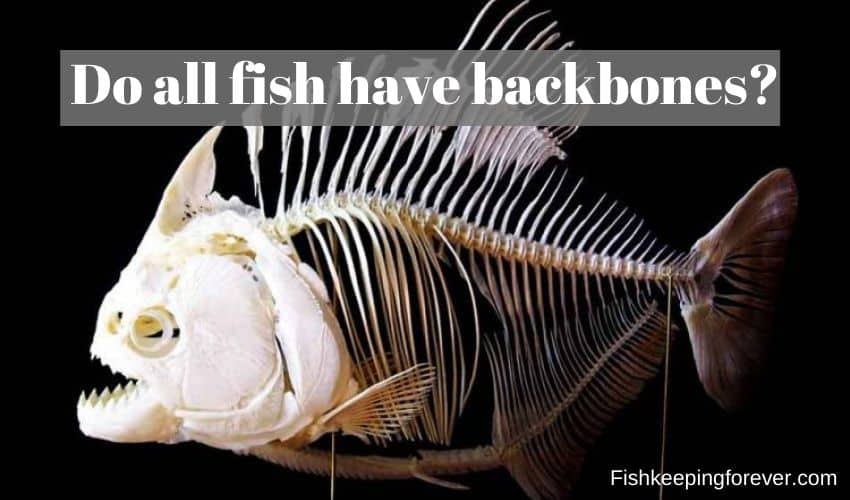You may think there’s an obvious answer to the question ‘Do all fish have backbones?‘ but the answer isn’t as obvious as you may think.
My son was recently doing a school homework project and this question came up. So I thought I would share what I know with you all.
Do all fish have backbones? Fish are vertebrates which means they have
Table of Contents
Do All Fish Have Backbones?
Yes, all fish have a vertebral column. Oh, wait! The hagfish hasn’t – they have a notochord. They have a cartilaginous rod that goes all the way through their body which is not technically classed as a backbone.
However, all other fish have a backbone (spine) that supports all their other bones and body parts.
All vertebrate species of animals, not only fish, have backbones. There are over 65,000 known species of vertebrate animals in the world.
WOW, That’s a lot, right?
Well actually no, vertebrates only make up about 3% of the world population of species.

Image Credits @AminalWorld
What’s The Purpose Of A Backbone?
The main purpose of a backbone and a skeleton for that matter is to support and protect vital organs, muscles and other body parts of the fish.
Just like humans, fish need to support their
Which Fish Don’t Have A Backbone?
Creatures in the ocean that don’t have a backbone are called invertebrates. Invertebrates form one of the biggest species in the ocean but all have one thing in common. They don’t have a backbone or to be technically correct a vertebral column.
Hagfish are the only species of fish that we know of that don’t have a backbone even though they are classed as fish.
Hagfish are scavengers that feed off dead fish remains and rotting flesh at the bottom of the seabed (disgusting right?). They have been known to attack live fish but not very often. They are also known commonly as ‘snot eel’ as they have the ability to release a blue slime from their skin when under attack or if they feel threatened as a form of defense.
Despite their names, Jellyfish and Starfish are not fish and therefore do not have backbones. In fact, they are plankton and don’t even have any bones, brain, or heart.

How do backbones grow
While all fish have backbones by definition, not all of them grow their backbones in the same way.
Land dwelling vertebrates like humans grow their backbones (spines) from cells called somites. Unlike, ray-finned fish that grow their backbones (spine) using different types of cells called somites and chondroblasts.
Scientists have been researching backbone development in fish for the past few years and more information can be found here.
Summary: Do All Fish Have Backbones?
The short answer is yes – all fish have backbones apart from one species – ‘The Hagfish’.
My son’s school homework got an A so I’m pleased with that!
I hope this article has helped you understand the structure of a fish better and you’ve learned all about backbones and why they are important in tropical and other species of fish.
You may like this article: Anatomy of a goldfish
- Silver Arowana: Complete, Care, Breeding, Feeding Guide
- Rainbow Shark: Diet | Size | Breeding | Cost
- Tiger Barb Fish: Diet | Breeding | Size | Water Conditions
- Jack Dempsey: Diet | Size | Breeding | Lifespan | Sexing | Care Guide
- How Are GloFish Made? Facts & F.A.Q

I have been working in the tropical fish industry for over 30 years now and I’m still learning. Everyday is a school day in this hobby. In my spare time I play golf very badly!



